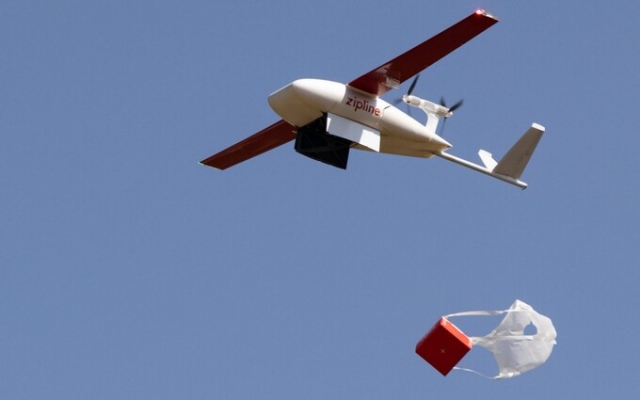 Drone delivery could ease traffic and enable more efficient delivery of government services, advocates say. Photo: Luke Dray/Getty Images
Drone delivery could ease traffic and enable more efficient delivery of government services, advocates say. Photo: Luke Dray/Getty Images
As the small plane is placed on a catapult-like ramp, its propellers begin to whir, creating a hum that's a cross between an electric razor and a swarm of bees.
An operator wearing a high-vis jacket checks to see if the coast is clear and presses the big green button. The plane takes off up the ramp into the sky, accelerating to a cruising speed of about 60 miles per hour.
After about 20 minutes, he releases a small package of medical supplies with a parachute attached. The cargo glides calmly towards the ground, reaching its target, and the aircraft returns to base.
This scene is depicted over a 50-mile stretch of England, north and west of Newcastle. Trials of the medical drone delivery system — a joint venture between the NHS, Silicon Valley company Zipline and logistics business Apian — were originally due to begin in September last year.
Currently the sky is quiet. The group is still awaiting approval from the Civil Aviation Authority (CAA).
Apian, the company leading the effort, has responded to concerns from local airfields, recreational pilots and businesses about limiting the scope of the proposed testing, which is funded by the NHS.
However, the plan is still not implemented. generated significant and vocal opposition. A local racecourse has expressed concern that wealthy patrons will not be able to arrive by helicopter while testing is underway. The Ministry of Defense weighed in, warning that the tests could impact defense testing at a nearby Royal Air Force base.
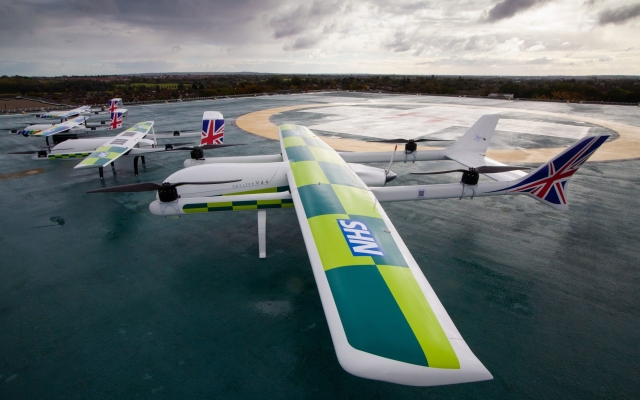 Apian faced opposition over NHS drone delivery trials. Photo: Apian/PA Wire
Apian faced opposition over NHS drone delivery trials. Photo: Apian/PA Wire
This scandal is a potential harbinger of things to come. Amazon said it would launch its first delivery services in the UK this year, reviving plans after abandoning a trial in Cambridgeshire several years ago. Irish startup Manna plans to do the same, and Wing, a subsidiary of Google parent Alphabet, is hiring in the UK.
Last week, the CAA said it was preparing for wider adoption of drone delivery by relaxing rules. which require drones not to fly in the same airspace as other aircraft.
Proponents say drones will mean faster deliveries and easier travel. traffic and more efficient government services. For example, Apian's proposed trial in Northumbria is designed to deliver prescriptions from a central hub to more than 30 GP surgeries and other healthcare providers in the area, speeding up the delivery of care.
However, opponents argue that drones it's wasteful, noisy and destructive, and its benefits are exaggerated.
The Civil Aviation Alliance, a group representing airspace users from skydivers to balloonists, called the Northumbria test «expensive and pointless». in a submission to the CAA.
Ultralight pilots said drones need to be equipped with collision avoidance technology, while airfields and local manufacturers said the plans would harm their operations.
p>Amazon also attracted significant local opposition when it tested drones on the outskirts of Cambridge, with local wildlife activists opposing the testing. Despite Jeff Bezos' big announcement in 2013 and Jeremy Clarkson's promotional video, commercial shipments have yet to begin.
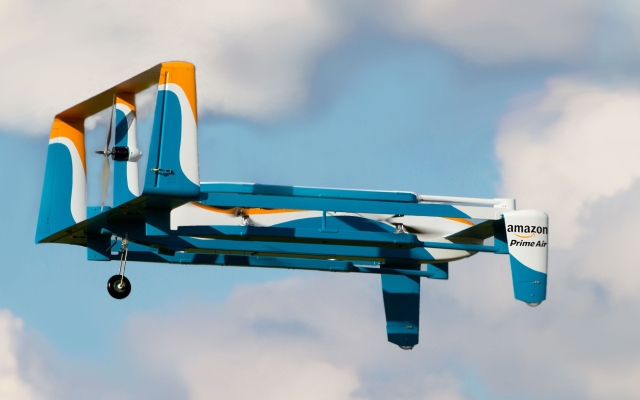 Amazon said that its Prime Air service completed its first trial delivery in 2016. Photo: Amazon
Amazon said that its Prime Air service completed its first trial delivery in 2016. Photo: Amazon
Louise Smith, Apian's chief aviation officer, calls the feedback gratifying and important. The company delayed testing until the second half of this year to accommodate changes to its plans.
It will now only fly at certain times of day and has reduced the area it plans to fly in so as not to prevent pilots from using popular coastal corridor or create inconvenience to small airfields.
Smith says the rules eventually need to be updated to ensure drone testing doesn't disadvantage others. Currently, drones flying beyond the operator's line of sight must do so in isolated airspace because collision avoidance protocols have not yet been developed.
The CAA changes announced last week are partly intended to address this problem.< /p>
The CAA changes announced last week are partly intended to address this problem.
The CAA changes announced last week should do so in isolated airspace.
p>
Drones will need to indicate their location to other aircraft by adding powerful upward-facing lights and broadcasting electronic beacons. This could only spark further controversy: the Civil Aviation Alliance said it agreed with the changes, but only if the drone industry paid for them and it caused minimal inconvenience to pilots.
Bobby Healy, whose drone company Manna has delivered more than 100,000 takeaways and coffees to Ireland, says the situation is more complex in the UK.
«It's a busier airspace and there's a lot of military there,» he said. he says. Manna's quadcopter drones typically fly lower and in more suburban areas than the proposed drones in Northumbria.
Even if these issues are resolved, the benefits of drones will be questioned. Scientists from the Universities of Southampton and Bournemouth, who studied NHS drone trials between the Isle of Wight and the mainland, claimed that the time savings had been exaggerated and that the cost of drone delivery was 133 per cent more expensive than using taxis and hovercraft.
However, supporters are not giving up. Apian is applying for permission to fly medical tests between two hospitals in London and eventually hopes to use drones across the UK.
“There's definitely a need for it,” says Smith. “There are a huge number of use cases that can be beneficial.”




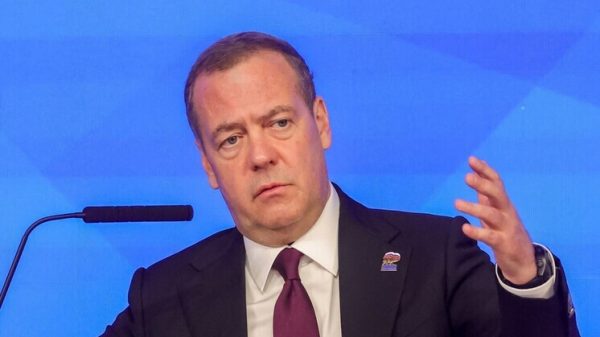

























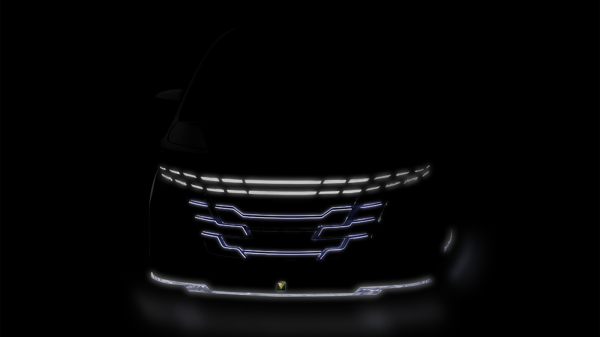
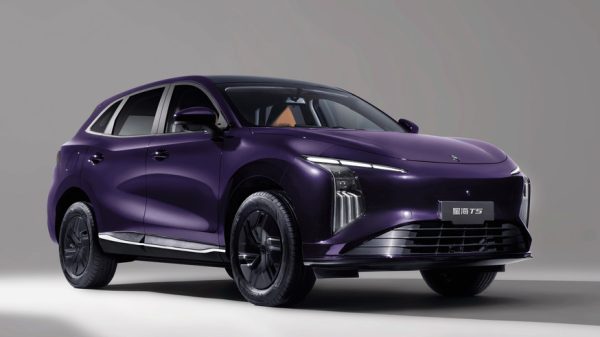























Свежие комментарии